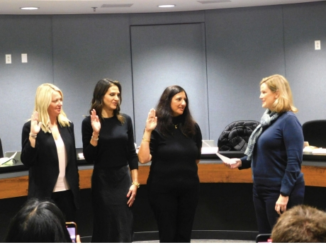
The disparity between the lengths of Costa’s first and second semester can compromise the education of students tak- ing semester-long courses but does not ultimately interfere with the education of the majority of students.
Costa’s first semester is a total of 78 school days, whereas its second semester is 102 days. This is a 24 day difference, approximately equivalent to five addition- al weeks of school in the second semester. This imbalance creates a schedule that puts students taking semester-long courses at a disadvantage and requires teachers to move at a faster pace to fit all of the content that needs to be covered, History department co-chair Adam Geczi said.
According to Costa English teacher Stacy Cabrera, she has to be more flexible with students in her first semester seminars, and is often unable to revisit difficult texts that the class covers due to the shorter period of time. The speed at which content must be covered in order to adequately ad- dress the curriculum in its entirety hinders students’ learning experiences and can prevent students from having the time to fully understand material, as well as prevent teachers from having the flexibility in their schedule to explain them.
Issues also arise from the multitude of breaks in the first semester. According to Geczi, the number of breaks and days off during the first semester greatly interfere with the level of productivity that students are able to have during the first semester. Students and teachers can experience a loss of motivation during breaks, which is harmful when a great deal of curriculum has to be covered and understood in a shorter period of time, Geczi said.
While first semester students are placed at a disadvantage in semester-long courses such as the English seminars, for seniors, this inequity does not necessarily extend to semester-long Advanced Placement courses. The instructional time for AP courses is roughly the same for both first and second semester-long AP courses, as AP exams take place roughly four weeks before the end of the second semester. This eliminates the potential for an unfair advantage in hours spent learning for AP courses.
Having first semester end prior to winter break provides a range of benefits, despite the disadvantages it can cause students. Ac- cording to Costa Principal Dr. Ben Dale, ending the semester in December allows seniors to have access to their finalized first semester grades to submit for college appli- cations. Additionally, the winter break is not filled with stress as students complete their final projects and papers, Dale said.
There is no popular solution to resolving the issues that arise from the uneven semesters. In the years prior to the 2016-17 school year, first semester concluded in January. Previous efforts to shorten the Thanksgiving break, as well, were met with limited success, and did not carry on into the following years. While people may be dissatisfied with any changes that encroach on their vacation time, it is worth considering that fewer days off and an earlier start date for the school year could create considerably less stress in the long term.




Leave a Reply